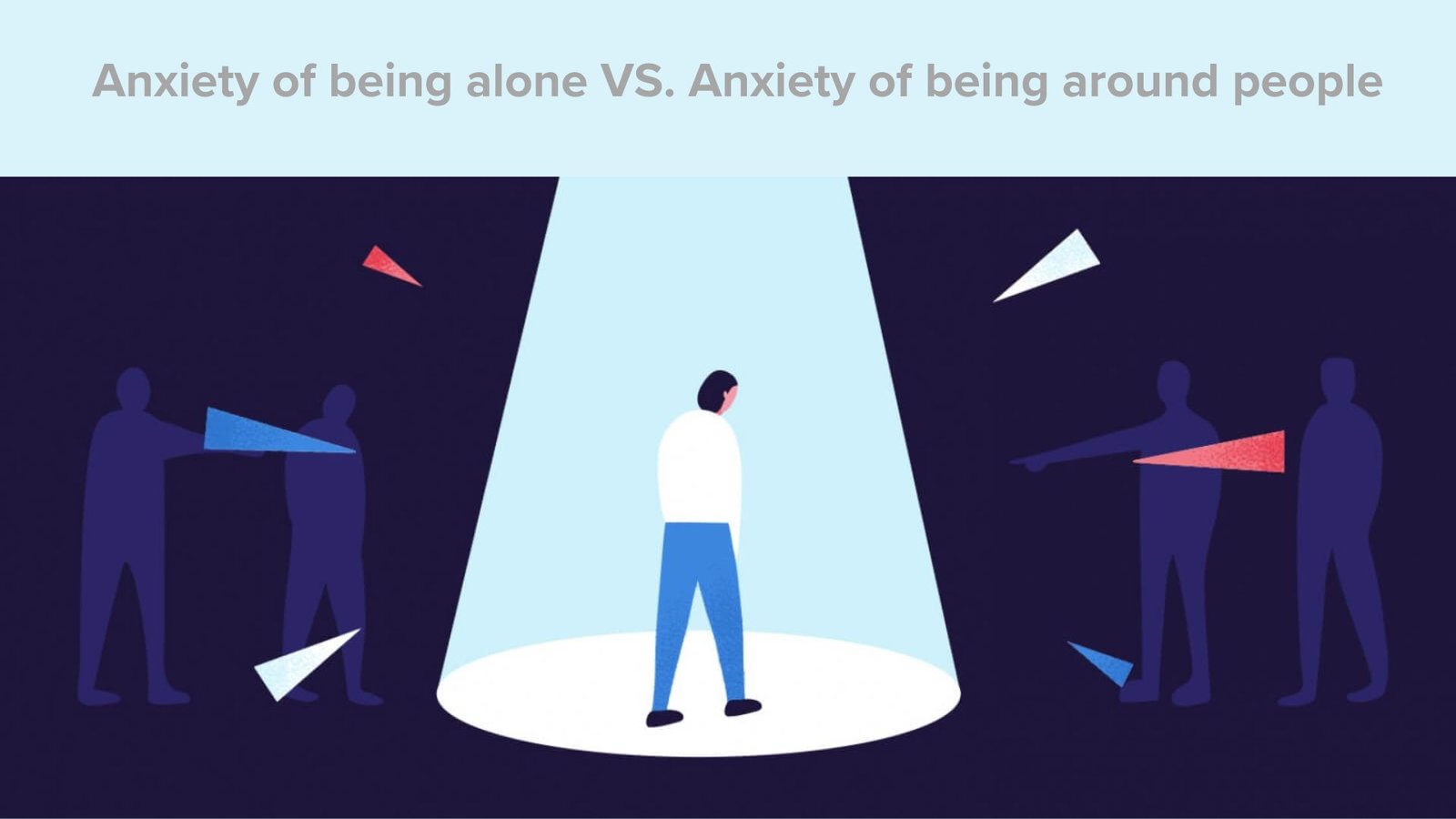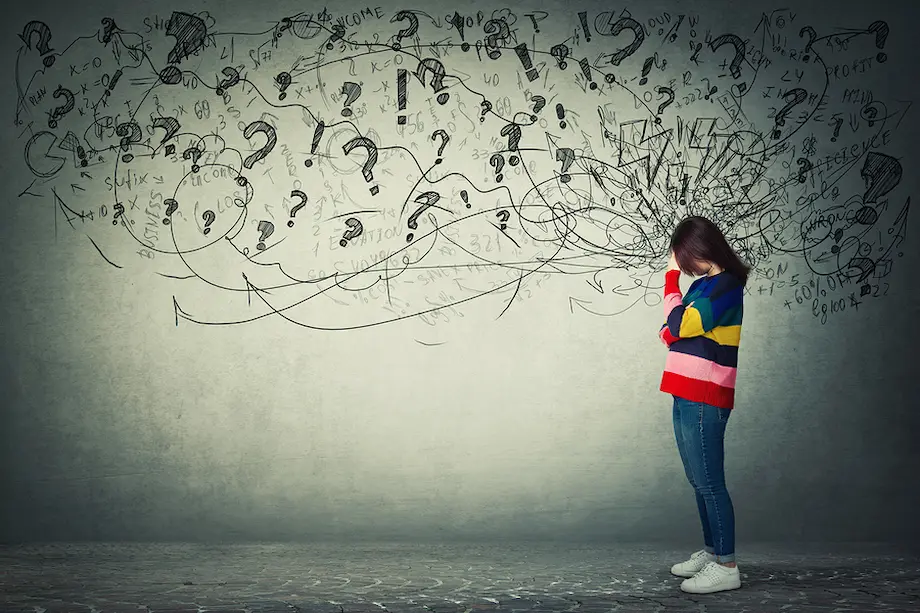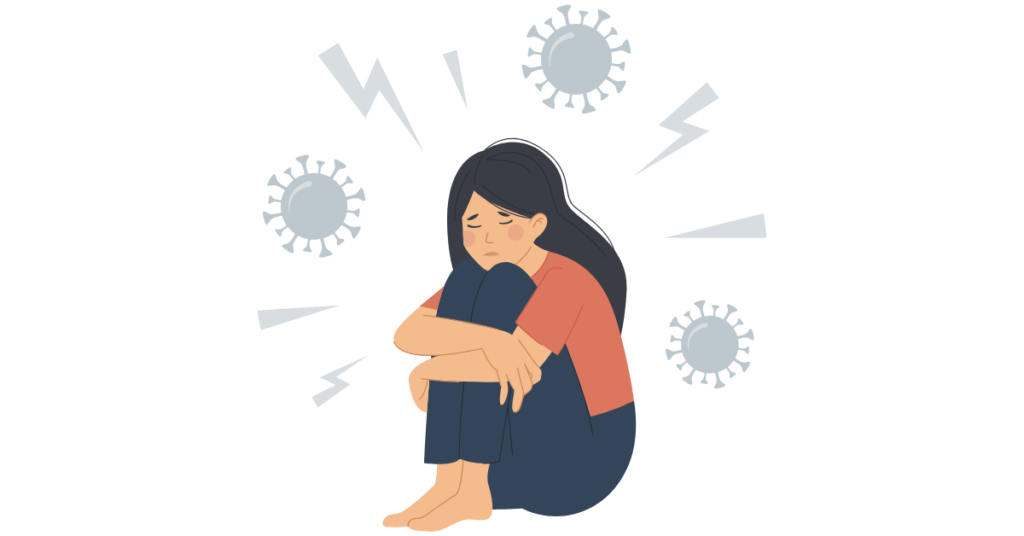
The Anxiety of Being Alone vs. the Anxiety of Being Around People
The Anxiety of Being Alone vs. the Anxiety of Being Around People
Anxiety is a complex emotion that manifests differently for everyone. While some people experience distress when left alone, others feel overwhelmed in social settings. Both types of anxiety—being alone and being around people—stem from deep-seated fears and emotional responses that can impact one’s mental well-being. Understanding these anxieties is crucial in learning how to manage them effectively.
Modern society puts a heavy burden on the individual’s ability to delicately balance periods of solitude and social contact. On the one hand, we are encouraged to be independent and like our own company, avoiding excessive dependency on others. On the other hand, human beings generally like to have friends and cultivate relationships to feel safe in a community; thus, this dual expectation creates a great inner fight, especially among people anxious in either-or both scenarios.
The fear of isolation can cause feelings of being isolated to become more suffocating, while furthering abandonment fears, insecurity, and low self-esteem. Social anxiety can actually make the possibility of interacting daunting, with related self-conscious feelings, avoidance mechanisms, and more isolation. A few may become trapped in the paradox of wishing for interaction, yet dreading the work entailed by its demands. Knowledge of these dual yet intertwined strains of anxiety helps to get ahead of the games.
This blog delves into the nature of both, their causes, and strategies to cope with them.
What is Anxiety?
Anxiety is a natural human response to stress, uncertainty, or perceived danger. It is a feeling of worry, nervousness, or fear that arises when we anticipate a challenge or an unknown outcome. Anxiety can be mild and fleeting, such as the nervousness before a big presentation, or it can be intense and persistent, interfering with daily life. While anxiety is a normal part of the human experience, excessive or chronic anxiety may indicate an anxiety disorder, which requires attention and management.
Anxiety stems from the brain’s fight-or-flight response, a survival mechanism that prepares the body to respond to threats. When faced with a stressful situation, the brain releases stress hormones like adrenaline and cortisol, which heighten alertness, increase heart rate, and sharpen focus. In the short term, this response is beneficial, helping individuals react quickly to danger. However, when this response becomes overactive—triggering excessive worry or fear even in non-threatening situations—it can lead to overwhelming stress, physical discomfort, and emotional distress.

Symptoms of Anxiety
While anxiety affects everyone differently, common symptoms include:
- Emotional Symptoms: Excessive worry, irritability, restlessness, or a constant sense of dread.
- Physical Symptoms: Increased heart rate, sweating, dizziness, shortness of breath, muscle tension, nausea, or digestive issues.
- Cognitive Symptoms: Racing thoughts, difficulty concentrating, intrusive worries, or overanalyzing situations.
- Behavioral Symptoms: Avoidance of stressful situations, compulsive behaviors, or a need for reassurance.
The Anxiety of Being Alone
The anxiety of being alone is also known as monophobia or autophobia, an intense fear of solitude. It is more than just loneliness; it’s a deep feeling of discomfort or dread when no one else is around. To some, solitude brings intrusive thoughts, abandonment phobias, or an intensified awareness of negativity.
Causes of the Anxiety of Being Alone
a. Fear of Abandonment – Previous experience of losing a loved one or having a rather unstable childhood could lead to intense fear of being abandoned.
b. Overactive Imagination – A quiet mind might easily get carried away into a world of negative thought patterns, and thus the mind can develop an irrational fear or catastrophic scenario in its mind.
c. Lack of Distractions – Social engagements usually keep individuals busy with social anxiety. Thus, loneliness will have to push individuals to directly face their thoughts and emotions.
d. Cultural and Social Conditioning – Being social is often confused with happiness and success in many societies. This leads to a subconscious fear that being alone makes a person undesirable or worthless.
e. Underlying Mental Health Conditions – Anxiety disorders, depression, or post-traumatic stress disorder (PTSD) can make a person fearful of solitude.
Consequences of the Fear of Solitude
- Dependence on others for security
- Shunning loneliness like a plague, at the cost of codependency
- Inability to tolerate loneliness or solitude reflection
- Racing heart, panic attacks, or discomfort in the body due to aloneness.

The Fear of Human Company
Social anxiety disorder, often referred to as the fear of being around people, is usually characterized by the phobia of social interactions, judgment, or even rejection. It is more than shyness and causes severe distress in routine situations.
Causes of Social Anxiety
a. There is the fear of judgment. Most anxiety-related to social behavior is fueled by concerns over what others think about them, always being on the watch for embarrassment or criticism.
b. Past traumas could include bullying, rejection, or humiliation, which can instill a long-term phobia of socializing.
c. Low self-esteem causes people to think others view them negatively, too.
d. Overstimulation – Too many people, too much noise, and too much social stimulation can be too much to handle, especially for introverts or highly sensitive individuals.
e. Brain Chemistry – Some scientists believe that imbalances in neurotransmitters, including serotonin, are the cause of social anxiety.
Effects of Social Anxiety
a. Avoidance of social gatherings, public speaking, or even simple interactions like making phone calls
b. Physical symptoms such as sweating, shaking, nausea, or rapid heartbeat in social situations
c. Difficulty forming or maintaining relationships due to fear of rejection
d. Constant self-criticism and overanalyzing past social interactions
The Paradox: Struggling with Both Types of Anxiety
Some individuals experience a paradoxical struggle: they feel anxious when alone but also feel anxious in social situations. This can lead to a constant state of unease, where neither solitude nor social interaction feels comfortable.
Common scenarios include:
- Wanting company but feeling drained by social interactions
- Feeling lonely when alone but anxious when around others
- Longing to connect but afraid of being rejected or judged
Managing Both Types of Anxiety
a. Gradual Exposure – Spend short periods of time alone and gradually increase the time spent over time.
b. Develop Healthy Self-Talk – Combat irrational fears of being alone by reminding yourself that being alone does not mean being abandoned.
c. Engage in Meaningful Activities– Find your hobbies or your creative skills to make aloneness delightful.
d. Seek Professionals Assistance -Therapy sessions especially cognitive behavioral therapy can significantly resolve deep and fundamental fears in staying alone.
e. Practice Compassion to One Self– Learning the beauty of a friend in their skin can let one turn isolation into selfdiscovery.
Conclusion
Both the fear of being alone and the fear of being amongst people arise from deep emotional triggers and personal experiences. While they may seem like opposite struggles, they share a common root—the fear. Whether it is an avoidance of loneliness or an avoidance of social judgment, both can be handled if the individual gains self-awareness, gradual exposure, and coping strategies appropriately. Solitude and social interaction should be balanced for a better and fuller life. Anxiety is not totally eliminated; rather, one learns to navigate solitude and socialization much more easily.
